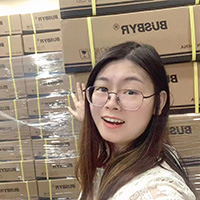News
Photovoltaic panels collect solar energy and convert it into direct current (DC). However, most homes and businesses use alternating current (AC). The inverter converts the DC power from the photovoltaic panels into usable AC power. There are two basic types of solar inverters by connection: string (or centralized) inverters and micro-inverters. A power optimizer can also be added to a string inverter to function similarly to a microinverter system. There are three basic types by function: grid-connected inverters, off-grid inverters and hybrid inverters.
By function: grid-connected inverter, off-grid inverter and hybrid inverter
Off-Grid Inverter (Off-Grid Inverter) refers to a solar inverter that does not rely on the grid and cannot operate simultaneously with the grid. By generating AC output in the form of square waves or sine waves, it provides electricity for independent systems It is to convert the DC power in the battery into AC power through a solar system and an off-grid inverter to provide self-sufficient household power supply facilities. In short, it can be connected to the battery for storage and self-use, but cannot sell electricity to the grid;
On Grid inverters convert direct current (DC) into alternating current (AC) suitable for injection into the grid. Grid-tie inverters are used between local generators: solar panels, wind turbines, hydropower and the grid. In short, you can sell electricity and use it yourself, but you cannot connect to the battery for storage.
A hybrid solar inverter is a device with both on-grid and off-grid capabilities that intelligently manages power from photovoltaic panels, solar cells, and the utility grid at the same time. In short, it can be used + battery storage + sold to the grid.
The solar inverter is the main component of the solar power generation system. Its main function is to convert direct current (DC) to alternating current (AC). Solar photovoltaic panels generate direct current electricity from sunlight. So you can see the importance and use of inverters. Buying a good inverter will make your solar power system last for a long time.
news twenty one
Will photovoltaic inverters usher in a "price increase"?
On April 12th and 13th, Jiangsu GoodWe Power Technology Co., Ltd. (hereinafter referred to as "GoodWe Company") and Guangdong Growatt New Energy Co., Ltd. Inverter manufacturers have successively released price increase notices, and the price increases of inverter products are all in the range of 10%-15%.
Will the price adjustment of the two companies become a prelude to the price increase of the entire photovoltaic inverter industry? How will it affect the photovoltaic industry?
Distributed products bear the brunt
Busbyr pointed out in the price adjustment statement that due to the impact of the new crown epidemic and changes in supply and demand in the global market, the core components chips and GBT power devices used in photovoltaic inverters are in extreme shortage recently, and the prices have risen accordingly. In addition, the prices of bulk raw materials such as copper and aluminum used in inverters are also rising. The company judges that the prices of these inverter core components will continue to rise for a long period of time in the future.
Similarly, Growatt also attributed the price increase to the drastic changes in the global raw material market, stating that "at present, the supply chain situation is becoming increasingly tense, and the price of bulk raw materials is not only rising, but also the delivery cycle is delayed."
As one of the core components of photovoltaic inverters, chips have experienced price increases and shortages. In the past half a month, 53 original chip manufacturers have collectively issued a price adjustment statement, with price increases ranging from 5% to 20%.
The reporter found that the products involved in the price increase of the two companies are mainly suitable for residential roof photovoltaic systems and small industrial and commercial photovoltaic roofs. Not long ago, Lu Chuan, chairman of Zhejiang Chint New Energy Development Co., Ltd., expressed concern about the supply of household inverters this year. He believed that the biggest obstacle to household photovoltaics this year should be inverters. After using the market, I found that I couldn’t buy the goods. There was no shortage of goods in April because the stocks in May and June were overdrawn.”
Lu Chuan pointed out that due to the shortage of chips, the output and category of photovoltaic inverter products may be affected. "The development of household photovoltaics this year may far exceed expectations, so there will be a shortage of household inverters. In the next few months, when the demand for inverters in local ground power stations increases, the inverters needed for households will definitely be second. Priority, supply will be tighter."
Mainstream products of major manufacturers have not yet adjusted prices
The priority of distributed power plants is lower than that of centralized ground power plants. So, under the pressure of raw material prices and supply, will the prices of inverter products required for ground power plants also increase?
"From the perspective of raw materials, on the whole, there is a certain shortage and price increase of chips. But compared with some small companies, the chip prices that mainstream manufacturers can get are more advantageous." A well-known domestic inverter company The relevant person in charge said that in addition to price, in terms of delivery time, "chip factories will also give priority to guaranteeing large customers, so the pressure on mainstream manufacturers is less. In addition, there are many types of chips required by inverters, and chip factories must first ensure mainstream customers. The supply of bulk demand, from this point of view, the demand for large ground power stations is greater than that of distributed power stations.”
On the other hand, the above-mentioned person in charge revealed that the main reason why mainstream large enterprises have not adjusted prices yet is the difference in their customer groups. "For domestic mainstream inverter manufacturers, the main customers are power generation companies such as the 'big five and four small', who purchase inverters through centralized bidding. Under such circumstances, who dares to raise prices easily? Don't dare to raise prices It would be good not to lower the price." "In the final analysis, it is a question of the right to speak. In the face of major customers of central enterprises, if the other party does not accept the price increase, the manufacturer will not increase the price. But for some individual customers, small distributors or household installers, There may be price increases.”
The impact of the price increase is limited to local
"Based on the current situation analysis, one or two companies will adjust the price of some products, which will not have a great impact on the industry." Some industry experts pointed out that compared with modules, inverters account for a relatively low proportion of the entire photovoltaic system cost . "The price increase of 10%-15% is equivalent to only one or two cents per watt. What's more, the current price increase is only for some manufacturers and some models of products, and there is no general price increase in the entire industry. The impact is localized. of."
"Theoretically speaking, with the rapid development of global photovoltaics, the scale effect is gradually increasing. The price of corresponding products or hardware materials should be declining year by year." The above-mentioned experts pointed out, "Although there are indeed some The price increase does not mean that the cost of all production links of photovoltaic inverters is rising, which is not in line with common sense."
The above-mentioned person in charge admitted frankly that the profits of some domestic mainstream photovoltaic inverter manufacturers are still at a high level. "Large companies would rather earn less than raise prices easily. In the process of centralized procurement bidding, it will be difficult to win the bid if the price increases, and there is a risk of losing a huge market share. Under such circumstances, large companies can only Carry out internal cost control and optimization, so as to absorb the cost increase caused by the chip price increase."


